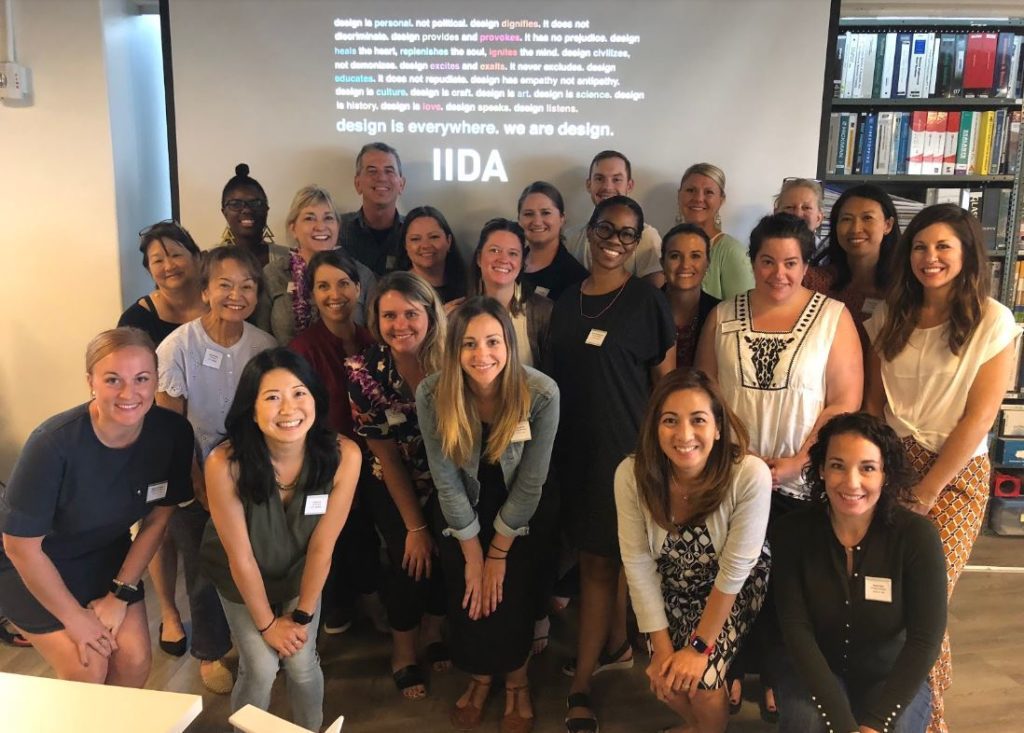November 30, 2020

Like every other industry today, architecture & design are having serious, soul-searching conversations around diversity, equity, and inclusion. But we may be missing a straightforward legal adjustment that could change the inner workings of the industry in profound and positive ways.
Our industry has focused for a long time on the overwhelming whiteness of the designer/architect pipeline. We have centered our diversity and inclusivity action plans on outreach to incoming generations of BIPOC (Black, Indigiouness, and people of color) college, high school, even elementary students who’ve historically not been exposed to or recruited by our industry. Programs like Architects in the Schools, Hip Hop Architecture, and Citizen Schools, among others, have all made great strides in beginning to close that talent gap. And for those who love our craft, sharing it with BIPOC students may naturally be the most attractive and sustainable form of activism.
But the emphasis on industry pipeline ignores the barriers to professional advancement young BIPOC designers face once they’ve joined the profession. In spite of decades of efforts public and private, in our industry, female designers, queer designers, black and brown designers are often still working for straight, white, male architects.
The current demographic makeup of the industry—and the undeniably different makeup of its leadership—is not just due to the discriminatory practices of individuals or companies. It is the inescapable result of regulatory laws that have failed to evolve with the industry and have resultantly granted disproportionate power to one class and professional category over all others. Despite years of diversification of design specialties, architects—who are overwhelmingly white and male—remain the legally designated authorities over our entire industry.
The history of commercial interior design explains this. Our discipline emerged from the practice of architecture in the last half of the 20th century due to the increased complexity of interior spaces and a new demand for thoughtfully designed interiors. Whereas interiors used to be just the accidental result of external architecture, in the 1960s and 70s both clients and designers began to see the potential for interiors to function as spaces that would help employees work more efficiently, students learn more effectively, patients heal more quickly. Interiors could, more generally, improve the quality of life for everyone who moved through and occupied them. This awareness created a new focus and need for a professional perspective independent from that of traditional architecture. Thus the commercial interior designer was born.
In addition to those personal and workplace challenges, the state has erected a legal barrier to professional advancement for non-architects. Commercial interior designers are not included in the California State Civil Code’s definition of Design Professionals, and they typically cannot submit drawings for permit without the stamp and signature of an architect. An ambitious commercial interior designer thus faces a professional impasse, and can find they have no pathway to ownership at all, since achieving this legal authority is often a requirement.
Is it ethical to encourage young students to get a degree in a field which doesn’t allow them access to the hallmarks of power in the industry? Do students know their choice of interior design over architecture may mean they never get the opportunity to submit drawings for acceptance at a building department all on their own, and may prevent them from ever achieving a position of ownership?
The practice of the law, itself, proves its antiquity. Architects aren’t generating all these drawings themselves; they are often stamping the work of commercial interior designers which includes details and specifications unfamiliar to them. These specifications, of course, represent the daily work and core competency of commercial interior design. It’s clear that the state needs to establish a new tier of recognition for qualified commercial interior designers that acknowledges and respects the specialized training and knowledge of commercial interior designers, who ensure that all citizens have safe, accessible, useful spaces to move through.
The idea of creating a new and particularly rigorous requirement for full participation in the industry might seem wrong-headed in terms of increasing diversity and equity. But as sociologist Beth Redbird’s research has found, “licensure… creates a set of institutional mechanisms that enhance entry into the occupation, particularly for historically disadvantaged groups…” In other words, providing a clear path to advancement allows people to pursue and achieve it equally, without such exclusionary considerations as personal connections and subjective assessments of style that in the past have served to suppress greater diversity among practitioners. In Redbird’s sample of 300 occupations over 30 years, the creation of occupational licensure increased the proportion of Black workers by more than 3%. Given the current demographics of our industry, 3% would be a significant improvement.
Importantly, associating real professional benefits like the ability to stamp and sign drawings with occupational licensure would not just increase the proportion of historically marginalized populations in the profession. Bestowing legal authority on interior designers through certification would qualify them for entry into partnerships and other senior leadership positions, from which they are now often technically excluded. In the short-to-mid-term, this would inevitably elevate a more diverse population into positions of ownership within the architecture and design world overall.
If we want BIPOC individuals to join, enrich, and diversify our profession—and we do, far beyond simply responding to the social pressure of this moment—we owe them a future that presents unfettered potential for leadership, ownership, influence, respect, and impact. Licensure of commercial interior designers is a critical change we can make right now to help level the playing field and open up those opportunities.
